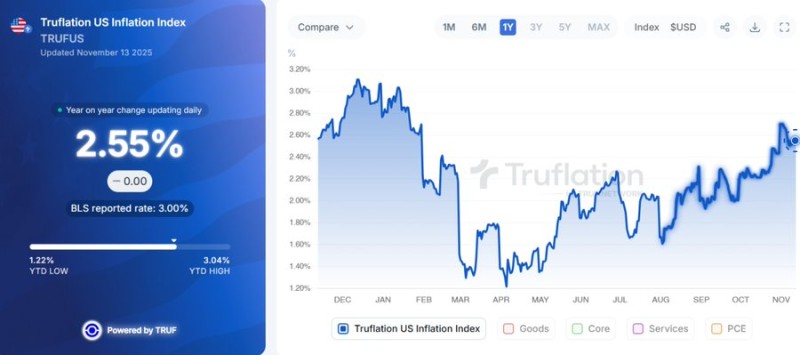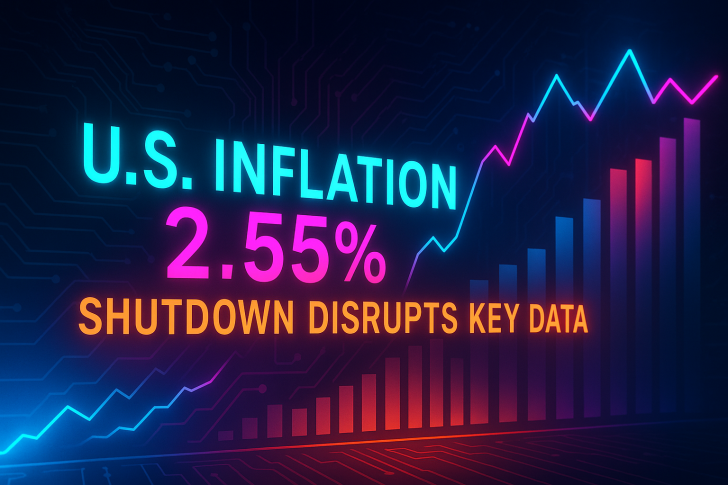⬤ U.S. inflation is currently running at 2.55% year-over-year according to Truflation's real-time index. The reading comes just as the longest government shutdown in U.S. history—43 days—officially ended after President Trump signed the funding bill overnight. But the damage is already done: federal agencies couldn't collect critical economic data during the closure, and those gaps won't be easy to fill.

⬤ The missing data creates real uncertainty for businesses and policymakers. The Bureau of Labor Statistics couldn't conduct its usual surveys, meaning key reports may never see the light of day. The White House has confirmed that both the October employment and inflation reports are likely gone for good. That's a problem for companies trying to gauge hiring needs and market conditions—official benchmarks they've relied on for years are simply missing.
⬤ The list of missed reports is long: weekly jobless claims, the September jobs report, trade data, wholesale inventories, PPI, retail sales, GDP estimates, PCE, JOLTS, and October employment figures. CPI did come out eventually—ten days late on October 24—but future federal releases will lean heavily on estimates and modeling since the raw data just isn't there. Throughout the shutdown, Truflation kept collecting millions of data points daily, providing continuous CPI, PCE, and employment updates without interruption.
⬤ For investors, this matters because the data vacuum means more reliance on alternative sources like Truflation. With inflation at 2.55% and months of government data missing, markets could see increased volatility driven by information gaps rather than actual economic weakness. Until federal agencies get back to full-speed data collection, independent real-time indicators will carry more weight in shaping expectations around inflation, jobs, and Fed policy.
 Saad Ullah
Saad Ullah

 Saad Ullah
Saad Ullah

